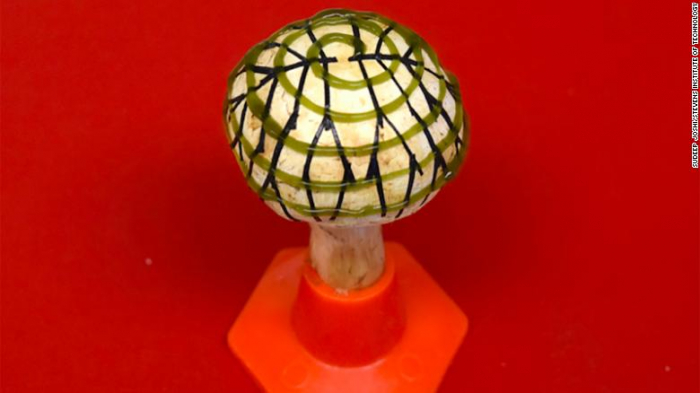Clusters of energy-producing cyanobacteria were attached to a typical button mushroom using 3D-printing technology, alongside an electrode network to harness the power they produce.
Cyanobacteria are common on land and in the oceans, and scientists are intrigued by their ability to turn light into energy via photosynthesis.
Despite research projects examining how cyanobacteria could be used to make electricity, their use in power generation is limited by the fact that they cannot survive for long on artificial surfaces.
However, the mushroom provides great conditions for the bacteria to thrive, thanks to a combination of nutrients, temperature and moisture, and the scientists found they survived several days longer on the mushroom than on other surfaces.
The research was carried out by Manu Mannoor and Sudeep Joshi of the Stevens Institute of Technology in New Jersey. They say their research shows the possibilities of "engineered symbiosis" between organisms and nonliving materials, which they characterize as different worlds.
"What we show in this paper is an approach utilizing a multi-material 3d printing to integrate and seamlessly merge (you can also say sort of 'marrying') the 'smart' properties of these both worlds - one of biological living micro-organisms and the other of abiotic functional nanomaterials," Mannoor wrote in an email.
Their work, published Wednesday in the journal Nano Letters, could be used to generate green energy at a time of growing concern over climate change. Although one so-called bionic mushroom produces only a small amount of bio-electricity, the scientists are working to connect a number of them in an array that could power a small lamp.
In addition, the team is looking into how to produce higher electrical currents using the bionic mushrooms, which would make them more useful.
The science behind the discovery could be used for other applications.
"As I mentioned, bacteria possess many other properties beside the electricity production," Mannoor said. "For example there are plenty bacteria in the human body that perform many functions."
"We would like to extend this approach of creating 'designer 3D bacterial nano-bionic' systems for application in biomedical field."
The Stevens Institute said in a statement that "The hybrids are part of a broader effort to better improve our understanding of cells biological machinery and how to use those intricate molecular gears and levers to fabricate new technologies and useful systems."
CNN
More about: mushroom
















































